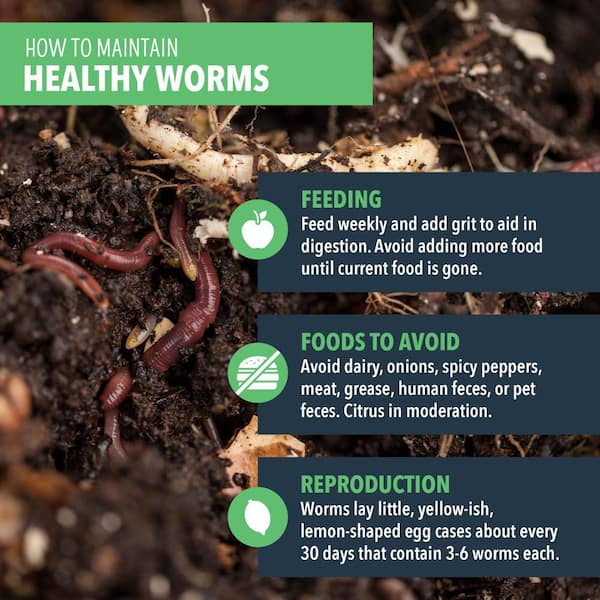Excitement About North Carolina Worms
Fascination About North Carolina Worms
Table of ContentsThe North Carolina Worms PDFsThe 6-Minute Rule for North Carolina WormsAll about North Carolina WormsSee This Report about North Carolina Worms
Instance: 1-gallon of worm castings to 4 gallons of potting mix. Do NOT utilize a potting mix that has chemical fertilizers in it. Check out the labelit will certainly say. 1/2 cup in all-time low of the planting hole for smaller sized plants. 1 mug for larger plants. ie. tomatoes, environment-friendly peppers, summer squash, and so forth.
The addition of tea can also include enhanced microbial biomass to your dirt. You can always side-dress your plants with worm spreadings at any type of time. Just bear in mind, the bacteria will certainly die if revealed to UV rays (Sun), so be certain to cover the castings with an inch approximately of soil.
This frustrated them for years till the testing methods ended up being much better. It would certainly get far better(with even more spreadings), level off, and then decrease. Also many worm castings would certainly increase the growth to a speed that the plant might not recoup from.
Little Known Facts About North Carolina Worms.
I have stated the virtues of worm castings for about 2000 words. Worm spreadings are no various. It takes time to develop high quality worm castings.
Worm spreadings definitely cost even more than chemical fertilizers. Worm spreadings are on the less expensive end of natural fertilizers. (50 gallons per year) It is a much harder and really costly financial investment to create large amounts of worm spreadings.

Producing a healthy soil might be the biggest benefit of worm castings. We reviewed worm castings NPK and additionally the proper nutrient evaluation that should apply to worm spreadings.
The 3-Minute Rule for North Carolina Worms
We talked about some of the drawbacks connected with worm castings. I covered a whole lot of material in this short article.
The vertical burrows are typically open, although the worms cap the top with residue and waste matter. The upright burrows are really vital factors of entrance for quick water infiltration right into the dirt, particularly in no-till systems. Air-filled porosity is important in aiding plant origins to prosper. Roots need oxygen for their growth, whereas they generate carbon dioxide that needs to leave the dirt.
Earthworms enhance porosity by two devices: (1) by developing long-term burrows, and (2) by improving dirt gathering. Aggregation is boosted by the blending of soil and raw material in the earthworms' guts. Lake James Bait. These highly secure aggregates are transferred by some earthworms in their burrows, and by others at the surface area of the soil


In an additional study, earthworms were estimated to consume 4 to 10 percent of the top 6 inches of the dirt annually. Dirt compaction lowers the porosity of the dirt.
4 Simple Techniques For North Carolina Worms
Normal earthworm populations can easily eat 2 heaps of dry matter per acre each year, partially digesting and blending it with soil. The importance of earthworms to blend surface residue with soil comes to be very clear in dirts that do not have any kind of earthworms. Many of our Pennsylvania dirts contend least some earthworms, and the effect of their full absence, therefore, can not be noted.
(https://smartseolink.org/details.php?id=387941)In these dirts, the development of topsoil with affordable natural issue material did not happen, causing inadequate plant development. When the cause was established, the government of the Netherlands started a project to present earthworms. After the intro of the earthworms, a dark topsoil layer was developed, and crop growth increased substantially.
They live mainly from partly decayed organic matter that is currently integrated in the soil. These varieties ingest large quantities of soil that they blend with digested crop deposit in their guts.
Their burrows remain open, although they cap the leading with crop residue that they pull to the entrance. These species ingest significant amounts of dirt that they blend with digested deposit in their guts. Their waste matter is mainly transferred at the surface of the dirt. The nightcrawler Lumbricus terrestris is the most prominent participant of this group.